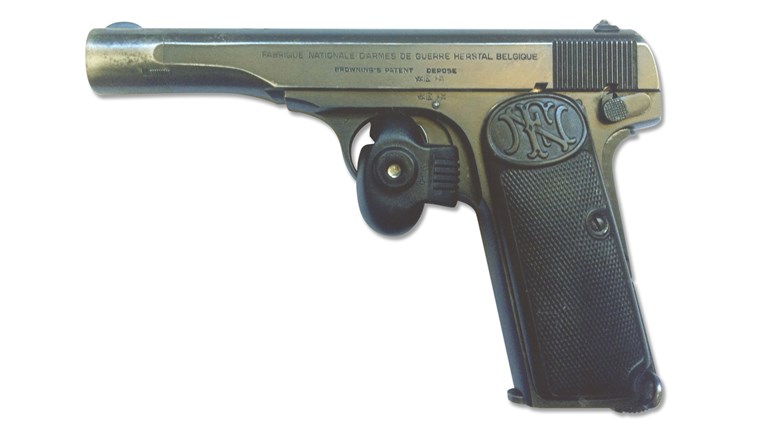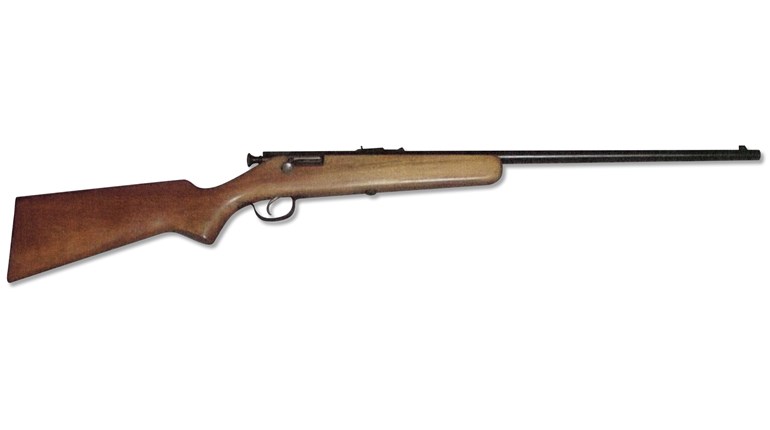
Although it is completely unwarranted, the Japanese Type 99 rifle still has a negative reputation in some circles. Introduced in 1939, it fought every major battle in Japan’s war with the United States. From Bataan to Guadalcanal, from the Gilberts, the Marshalls, the Marianas and the Ryukyus, to Peleliu and Iwo Jima, it gave Imperial forces a powerful and effective shoulder arm. Development of the Type 99 was the product of an evolution that began with the adoption of Nariakira Arisaka’s Type 30 in 1897, and continued with the adoption of Kijirō Nambu’s Type 38 in 1906. Both of those battle rifles fired the 6.5x50 mm smokeless cartridge that, by the 1930s, was demonstrating some shortcomings in combat. Although it was a flat-shooting round, the 6.5 mm could be deflected by dense vegetation and did not produce wounds nearly as dramatic as the 7.92x57 mm cartridge that the Chinese frequently used. Therefore, Japan sought to develop and adopt a rifle chambered for the heavier cartridge of its Type 92 machine gun: 7.7x58 mm.

The resulting 7.7 mm rifle carried over some elements of the Type 38, like its cock-on-close action, rotating manual safety, dustcover and five-shot internal magazine, but it also introduced some important changes, which included a modified bolt, chrome bore and a monopod. The new design also featured a modified rear-sight assembly using a peep aperture with ladder adjustment out to 1,500 meters, and a pair of folding wings that could be used to calculate lead for the purpose of directing fire at aircraft in flight at low altitude. Adopted in 1939 as the Type 99, the weapon initially went into production in a “Long Rifle” configuration with a 49.5-inch overall length. After only 38,000 examples of this version had been delivered, production switched over to the 44.1-inch long, 8.16-pound “Short Rifle” during the spring of 1941. This version of the Type 99 represented the bulk of production from eight different manufacturers. A sniper version and a takedown “Paratroop Rifle” meant for use by Japanese airborne forces were also produced, but in limited numbers only. By the time production ended in 1945, more than 3.5 million of the bolt-actions had been made.
Two aspects of production merged to create the Type 99’s perennially unflattering reputation. First of all, a version of the rifle was produced for training purposes that was made of mild steel and was intended for use with blank ammunition only. At the end of World War II, unknowing G.I.s fed live, ball ammunition into these Type 99 trainers and the results were catastrophic. As word spread about rupturing guns, a narrative was born that the Type 99 was poorly made. The so-called “last-ditch” Type 99s only contributed to the rifle’s growing sinister reputation. After mid-1942, the various manufacturers producing the rifle began to delete features from it in the interests of decreasing production time, conserving precious raw materials and reducing cost. The sliding dustcover soon disappeared, as did the fine knurling on the manual safety and the adjustable rear sight.

Eventually, even the Type 99’s metal buttplate was replaced with a plank of wood. Since the rifle followed an ongoing continuum of simplification through to the bitter end of the war, late-war examples have come to be known as “last-ditch” rifles. When the crudeness of the “last-ditch” Type 99s merged with the mythologized narrative that the training rifles created, the reputation of one of the finest military bolt-action rifles ever made was forever tarnished. In reality, the Type 99 was a successful design that served the Japanese Empire effectively throughout the Second World War, and it was even a part of conflicts beyond 1945. While you will not find it in photographs of 21st Century warfare, it nevertheless holds a place of distinction for collectors who understand that the Type 99’s generally negative reputation is undeserved.






































